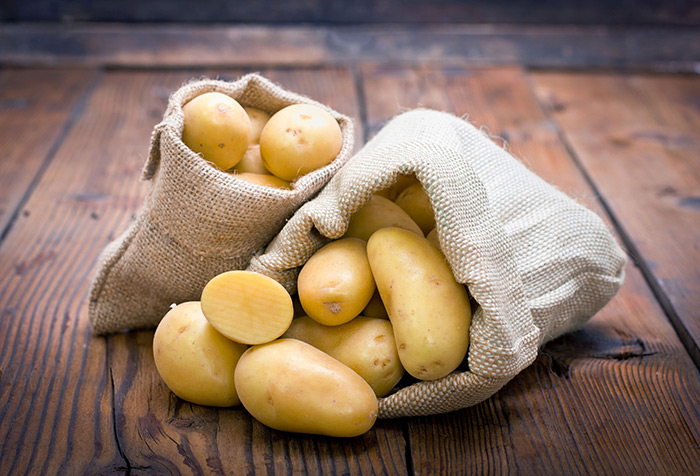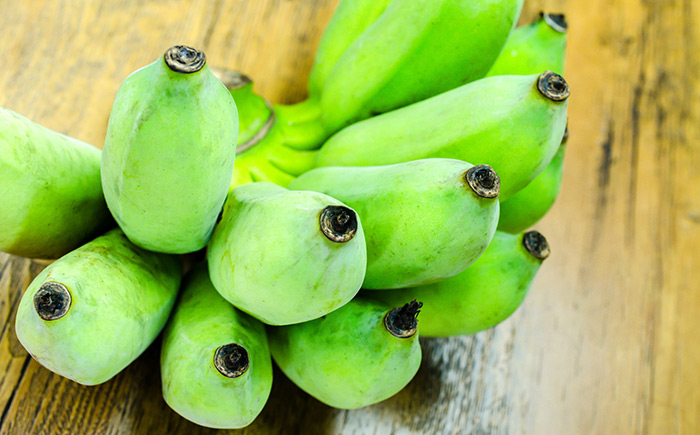This topic is probably as controversial as Banting itself.
What is resistant starch (RS)?
Resistant starch is the starch that passes through the digestive system, without being absorbed or digested by the body, and lands up in the colon where it gets utilised, as a prebiotic, by the good bacteria already there.
Probiotics vs prebiotics:
We need both probiotics and prebiotics in our digestive systems. The probiotics introduce the good bacteria into the gut, while the prebiotics are the fermentable fibres that the good bacteria feed on, which helps to improve the good-to-bad bacteria ratio.
Probiotic-rich foods include: Greek yoghurt, kefir, kimchi, pickled foods, kombucha, and sauerkraut.
Prebiotic-rich foods include: asparagus, onion, garlic, leek, cabbage, green beans, artichoke, sweet potatoes, gem squash, carrots and bananas.

Benefits of RS:
Resistant starch is thought to have many health benefits, which include improved insulin sensitivity, lower blood sugar levels, reduced appetite, fat oxidation and various benefits for digestion.
The problem with RS on the Banting diet,though, is that it is mainly found in high carb foods such as raw potato or cooked and cooled potato, cooked and cooled rice or parboiled rice, legumes, green bananas, plantain flour, cassava, tapioca and mung bean sprouts.
Dr Gary Fettke says on the LCHF podcast . “[You] are still getting the same amount of carbohydrate, whether or not it’s as a normal starch or as a resistant starch. My understanding of that is that [you’re] still going to be taking that carbohydrate load, that’s still going to be converted into fat, so if [you’re] really desperately trying to lose the weight, the resistant starch is probably not going to give [you] great benefit.”
If you are insulin resistant, your prime focus should be on preventing insulin spikes and weight gain.
Gut health and insulin resistance (IR):
There is also something else to consider; research has shown that gut flora , and the health of the gut, has a massive part to play in both obesity and diabetes. According to Chris Kresser , nearly every patient he treats with a blood sugar issue also has a leaky gut, a gut infection, or some other chronic inflammatory gut condition.
This implies that for most people with IR, the bad-to-good bacteria ratio is heavily skewed towards the bad.
Bad bacteria feed on sugar and carbs, which are found in large amounts in the resistant starch foods, so in essence, by eating resistant starch foods you will also be feeding the bad bacteria.
Dr Gary Fettke says, “About half the patients who have IBS, have a fructose intolerance. The inflammation generated partly relates to the amount of fructose and fermentable sugars that are reaching the gut flora and then fermenting them in that gut and creating more troubles.”
Someone with a leaky gut has perforations in the gut lining, therefore the undigested starch (or RS), might not make it all the way to the colon, but could fall through the holes in the gut lining and land up in the blood stream.
If the RS does make it all the way to the colon, there might not be enough good bacteria in the colon to feed on it.
Who would benefit from resistant starch?
Resistant starch would work wonders on a healthy system, but for someone with digestive problems – the focus should first be on starving the bad bacteria, replenishing the good bacteria, and allowing the good bacteria to flourish. And then slowly starting to introduce low carb RS foods to see if the system can handle it.
What do you do if you are insulin resistant?
Step 1:
Eliminate all grain and sugars from the diet to starve the bad bacteria.
Step 2:
Eat probiotic rich foods such as Greek yoghurt (if you are not lactose intolerant), sauerkraut, kombucha, kefir and other fermented foods, to bring back the good bacteria.
Step 3:
Eat a wide range of low carb, fibre rich foods, to promote an extensive range of good gut bacteria, such as sunflower seeds; sesame seeds; radishes; avocadoes; peppers; spices such ascayenne pepper, paprika, chilli powder; and herbs like oregano, parsley, basil.
Step 4:
Eat a variety of fresh vegetables. Leafy greens like kale, chard, and spinach, as well as broccoli, cauliflower, and any other vegetable that contains soluble fibre.
Step 5:
Eat prebiotic rich foods like asparagus, leeks, onions, garlic and artichokes.
Step 6:
Depending on your level of insulin resistance, you could slowly start to introduce higher carb foods, on the orange list, such as cooked and cooled sweet potato and green banana. This is only recommended once you have given your system time to heal (which would be a different period of time for every individual). We strongly advise you to eat these foods sparingly.

Not all resistant starch is bad. According to studies, the most reliable way to get lots of RS, fast, is with raw potato starch.
Potato starch might be the safest way to get RS into your system. Raw potato starch contains about 8 grams of resistant starch per tablespoon and almost no usable carbohydrate.
You could start with a teaspoon and work your way up to about 20-30g. The great thing about this is that you can either drink it in water or use is in food, but it should always be cold.
It is important to start slowly and work your way up, because too much, too soon can cause gas and mild discomfort.
In conclusion, there are great benefits to including RS foods in your diet, if you have a healthy system. But, for someone with insulin resistance, the prime focus should be on managing insulin levels and weight gain, with a low carb diet, as well as getting the gut back to optimal health.


